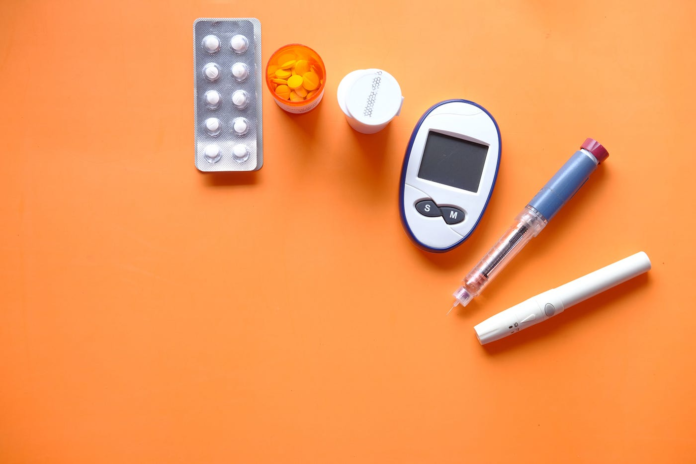Diabetes Type 2 is a chronic condition that affects the way the body processes blood sugar (glucose). It’s a significant health issue worldwide, and understanding its causes, symptoms, and potential cures can help manage and prevent the condition. This blog will provide a comprehensive overview of Diabetes Type 2.
Causes of Diabetes Type 2
1. Genetic Factors:
One of the primary causes of Type 2 diabetes is genetics. If you have a family history of diabetes, you are at a higher risk of developing the condition. Specific genes can influence how your body produces insulin, a hormone crucial for regulating blood sugar levels.
2. Obesity and Physical Inactivity:
Being overweight or obese is a significant risk factor for Type 2 diabetes. Excess fat, especially around the abdomen, can cause the body’s cells to become resistant to the effects of insulin. Coupled with a sedentary lifestyle, this increases the risk of developing the disease.
3. Insulin Resistance:
In Type 2 diabetes, the body’s cells become resistant to insulin, meaning they don’t respond to the hormone as effectively. As a result, the pancreas produces more insulin to compensate, but over time, it can’t keep up, leading to elevated blood sugar levels.
4. Poor Diet:
Diets high in sugar and unhealthy fats contribute to the development of Type 2 diabetes. Consuming a lot of sugary beverages, processed foods, and fast food can lead to weight gain and insulin resistance.
5. Age:
The risk of Type 2 diabetes increases with age. This is partly because people tend to gain weight and become less physically active as they get older. However, Type 2 diabetes is becoming increasingly common in children, adolescents, and younger adults due to rising obesity rates.
6. Hormonal Changes:
Certain hormonal changes can increase the risk of Type 2 diabetes. For example, women with polycystic ovary syndrome (PCOS) have a higher risk due to insulin resistance associated with the condition.
Symptoms of Diabetes Type 2
a. Frequent Urination:
High blood sugar levels cause the kidneys to work harder to filter and absorb the excess sugar. When they can’t keep up, the excess sugar is excreted into the urine, leading to more frequent urination.
b. Increased Thirst:
As you urinate more frequently, you lose more fluids, leading to dehydration and increased thirst.
c. Extreme Hunger:
Insufficient insulin prevents glucose from entering the cells, which can make you feel hungry even if you’ve just eaten.
d. Fatigue:
When cells don’t get enough glucose, your body can’t produce the energy it needs, leading to feelings of tiredness and fatigue.
e. Blurred Vision:
High blood sugar levels can cause swelling in the lenses of the eyes, leading to temporary blurred vision.
f. Slow-Healing Sores or Frequent Infections:
High blood sugar can impair circulation and the body’s natural healing process, making you more prone to infections and slow-healing wounds.
g. Unintended Weight Loss:
Despite eating more to alleviate hunger, some people with Type 2 diabetes lose weight. This is because the body can’t use glucose properly, and it starts burning fat and muscle for energy instead.
h. Tingling or Numbness:
High blood sugar levels can damage nerves, causing tingling, numbness, or pain in the hands and feet.
Cure and Management of Diabetes Type 2
While there is no cure for Type 2 diabetes, it can be managed effectively through lifestyle changes, medications, and regular monitoring. Here are some key management strategies:
I. Healthy Eating:
A balanced diet rich in fruits, vegetables, whole grains, and lean proteins can help control blood sugar levels. Avoiding sugary drinks and processed foods is essential.
II. Regular Exercise:
Physical activity helps lower blood sugar levels by increasing insulin sensitivity. Aim for at least 150 minutes of moderate aerobic activity or 75 minutes of vigorous activity each week.
III. Weight Loss:
Losing excess weight can improve insulin sensitivity and lower blood sugar levels. Even a modest weight loss of 5-10% of your body weight can make a significant difference.
IV. Medication:
Several medications can help manage Type 2 diabetes. Metformin is often the first prescribed medication, as it reduces glucose production in the liver. Other medications may include sulfonylureas, meglitinides, or insulin therapy.
V. Blood Sugar Monitoring:
Regularly checking your blood sugar levels can help you understand how different foods, activities, and medications affect your blood sugar. This information can guide your treatment plan.
VI. Stress Management:
Stress can affect blood sugar levels. Practicing relaxation techniques such as yoga, meditation, or deep breathing exercises can help manage stress and improve overall health.
VII. Regular Check-Ups:
Regular visits to your healthcare provider are crucial for managing Type 2 diabetes. These visits can help monitor your condition, adjust your treatment plan, and catch any potential complications early.
VIII. Education and Support:
Diabetes education programs can provide valuable information and support for managing the condition. Connecting with support groups can also offer emotional support and practical advice from others living with diabetes.
Conclusion
Type 2 diabetes is a manageable condition with the right lifestyle changes, medication, and regular monitoring. Understanding the causes, symptoms, and management strategies can empower individuals to take control of their health and live a fulfilling life despite the condition. By adopting healthy habits and staying informed, you can effectively manage Type 2 diabetes and reduce the risk of complications.


